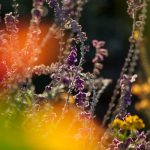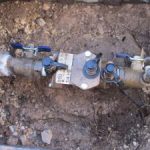With water restrictions becoming commonplace in many cities across the country, both municipalities and homeowners are discovering that efficient landscape irrigation plays a significant role in water conservation.
Low volume irrigation, better known as drip irrigation, delivers water slowly at low pressure directly to the root zone of plants. Because of its slow and direct application, very little water is lost to evaporation or run-off.
Drip irrigation consists of two different systems that can be used separately or together. One component uses an array of emitters that deliver water to specific plants using flexible quarter-inch tubing with an emitter at the end. These emitters come in various flow rates depending on size and type of plant.
The other system is designed to water a larger area where plants are not as widely spaced. This tubing has emitters molded directly onto the tubing at set intervals (usually 12 and 18 inches). This tubing is buried just below the soil or beneath the mulch.
Considering drip irrigation? Keep these things in mind:
- The inline filter and pressure valve need to be checked periodically.
- All emitters are self-flushing and most systems have an automatic flush valve designed into the end of the system.
- SAWS recommends using a licensed irrigation company to install your system.




